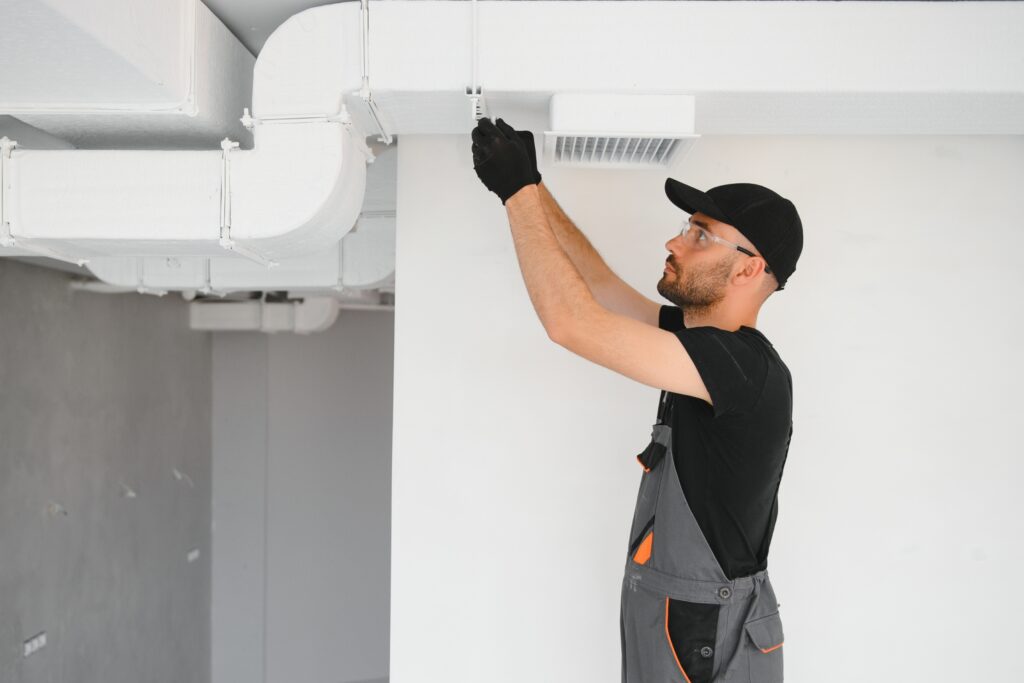
What Is Lead Management?
Not only getting leads is important for success in the HVAC business, but also how well those leads are handled. Lead management is a planned way to get requests, organize them, follow their progress, and keep in touch with them until they buy something.
In the past, this process has been done by many HVAC companies with scribbled notes, shared files, or just an email. These methods may work for a small business, but as the business grows, they become less stable very quickly. Calls that are missed, quotes that are lost, and replies that are late often cost money.
These issues can be fixed by using a specific HVAC lead management system that groups all interactions into one well-organized space. As soon as a customer contacts you through a form, a call, or a tip, the system records their information, sorts them into groups, and makes sure that follow-ups happen automatically. This organized method not only raises the number of sales, but it also gives customers a more efficient and regular experience.
The HVAC Sales Funnel Explained
The HVAC sales funnel shows the steps a possible customer takes from first becoming interested to booking a service. Lead management is closely related to the sales funnel. In contrast to normal B2B sales processes, HVAC contacts happen quickly because homes and property managers usually need help right away. People often get hired based on how quickly and clearly they can communicate.
In a clear HVAC sales funnel, leads are first gathered from different sources, and then they are screened based on how urgent they are and what kind of service they need. After that, they are kept interested through regular follow-ups that keep the friendship going and build trust. In the last step, those leads are turned into booked jobs.
Companies can see every step of the process clearly when they use a GoHighLevel HVAC CRM to handle it. Leads move through the funnel in a planned way, helped by automatic steps that make sure contact stays on track. The flow of work is now more stable and regular, and there is none of the chaos that comes with tracking things by hand.
Tracking Sources: Google Ads, Referrals, SEO
One of the most useful things about a good HVAC CRM system is being able to see where leads come from. HVAC companies can make better marketing choices, invest in the outlets that work best, and tweak their strategies for the best return on investment by keeping track of where all of their inquiries come from. Three of the best ways for HVAC companies to get leads right now are through Google Ads, word-of-mouth, and pure SEO. Each one helps a business grow in its own way, and a well-set up lead management system lets you measure them all accurately.
Google Ads
One of the fastest ways to get new HVAC leads is still to use Google Ads. Paid search results are often clicked on because they are at the top of the page and can help people right away with repairs or building quotes for their homes. If an HVAC company tags leads from Google Ads campaigns, they can see exactly how much they spend on each lead and how many of those leads turn into jobs.
When HVAC companies use CRM software that works well with other programs, they can connect their ads directly to sources of leads. So, they can see every click that happens after a call or form is filled out. With this data, business owners can easily see which efforts bring in the most leads and which ones might need to be changed or stopped.
Referrals
In the HVAC business, getting leads through word of mouth is often the most efficient and least expensive way to do it. People already believe a service when a happy customer tells a friend, family member, or neighbor about it. A lot of businesses don’t keep good track of relationship leads, though. This will be different if every person has a good CRM.
When HVAC companies tag referral leads separately, they can see how many jobs come from word of mouth and how much loyal customers are worth. They can also credit people who bring them new customers. In the long run, this data can show that leads from word-of-mouth tips tend to be more valuable and cost less to get than leads from paid ads. They can improve their customer reward schemes and how they deal with the public now that they know this.
SEO
Search engine optimization, or SEO, is the best way to get long-lasting leads. It will be easy for people to find them if they are good at what they do. You don’t have to pay every time someone clicks. Most of the time, these leads come from blog posts, business pages, or comments on your Google Business Profile that are helpful.
With a good HVAC CRM system, companies can mark search leads as successful and track their progress over time. Find out which keywords and pages get the most questions from people to help your business improve its content plan and make its website stand out. On the other hand, SEO leads tend to slowly build up over time. Because of this, they are a key part of a complete plan for getting leads.
How CRMs Tag and Score Leads
CRM systems, which have powerful tools like tags and scores, are better for HVAC than spreadsheets. Leads are put into groups called “tags” based on where they live, what service they need, how quickly they need it, or how they heard about the business. You give each lead a score, which helps teams choose the best ones.
A lead from Google Ads that responds quickly to follow-up texts and talks to the business may get a high score. Another lead who filled out a form but hasn’t done anything else could get a lower score. Being able to tell the difference lets HVAC companies focus their sales efforts on areas where they are most likely to succeed. Low-scoring leads can be put into parenting routines that keep them warm until they’re ready to convert, while high-scoring leads can be sent to fast-track workflows for quick follow-up.
Example GHL Pipeline Setup for HVAC
The fact that GoHighLevel can mimic real-world processes through flexible systems is one reason why HVAC businesses like it so much. A normal pipeline might start with “New Lead” and end with “Job Completed” or “Review Requested.” In between, there are usually a lot of automatic steps.
Let’s say a customer goes to your website and fills out a quote form. The system tags the lead right away with its source, puts it in the right stage, and sends a confirmation text. An automated follow-up is sent if the lead doesn’t reply within a certain amount of time. The system sets the job, changes the calendar, and lets the team know once the price is accepted. Every step is written down, so everyone in the company can see what’s going on and be held accountable.
This amount of organized process gets rid of the need to guess and makes sure that no lead is missed. Everyone in the office, in sales, and in tech help can see the most up-to-date information. Now it’s easy for everyone to talk to people and work together.

Final Thoughts
A clean HVAC lead management system is more than just a place to store papers; it’s what helps companies grow. There are smart ways for HVAC companies to get leads, keep track of where they came from, give them scores, and move them through an automatic process. This can help them make more sales and keep customers happy.
If you’re ready to streamline your operations and gain full control over your lead flow, discover how to manage leads automatically with GHL.

